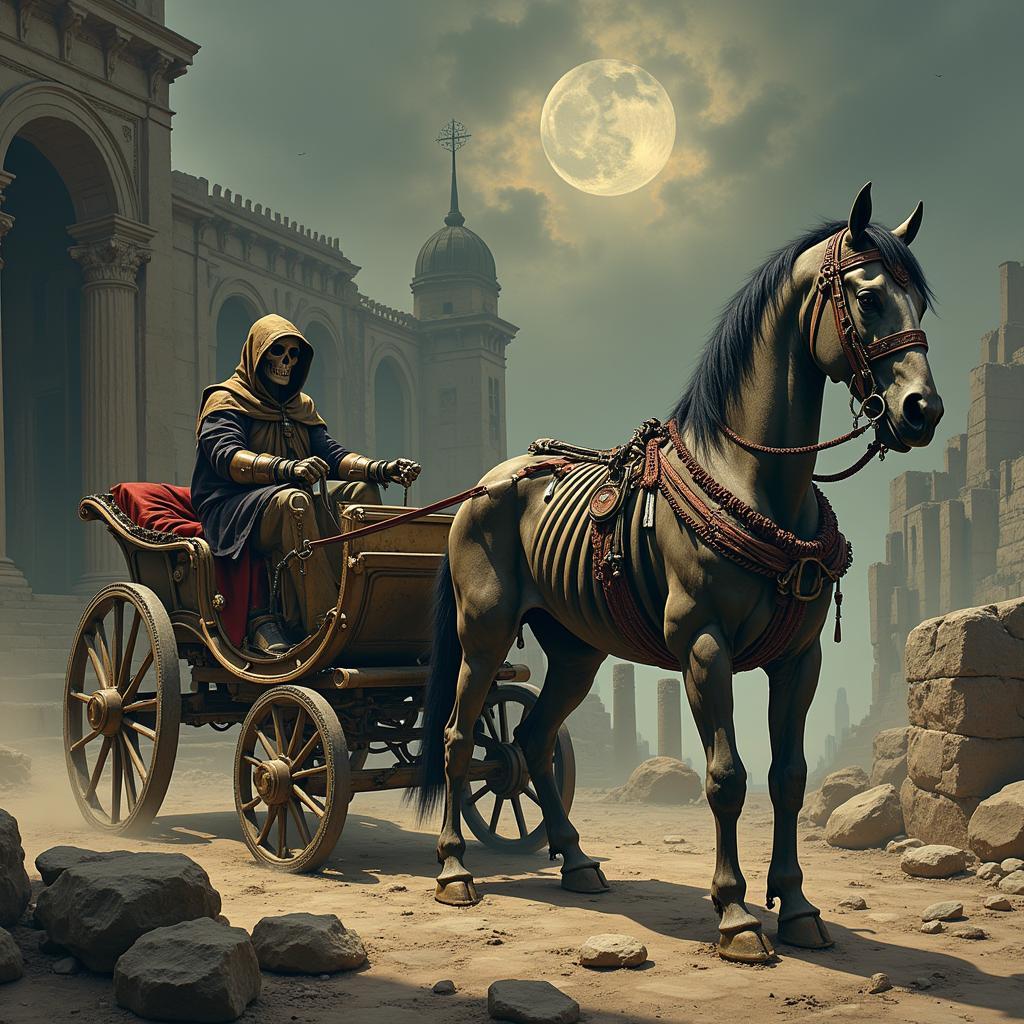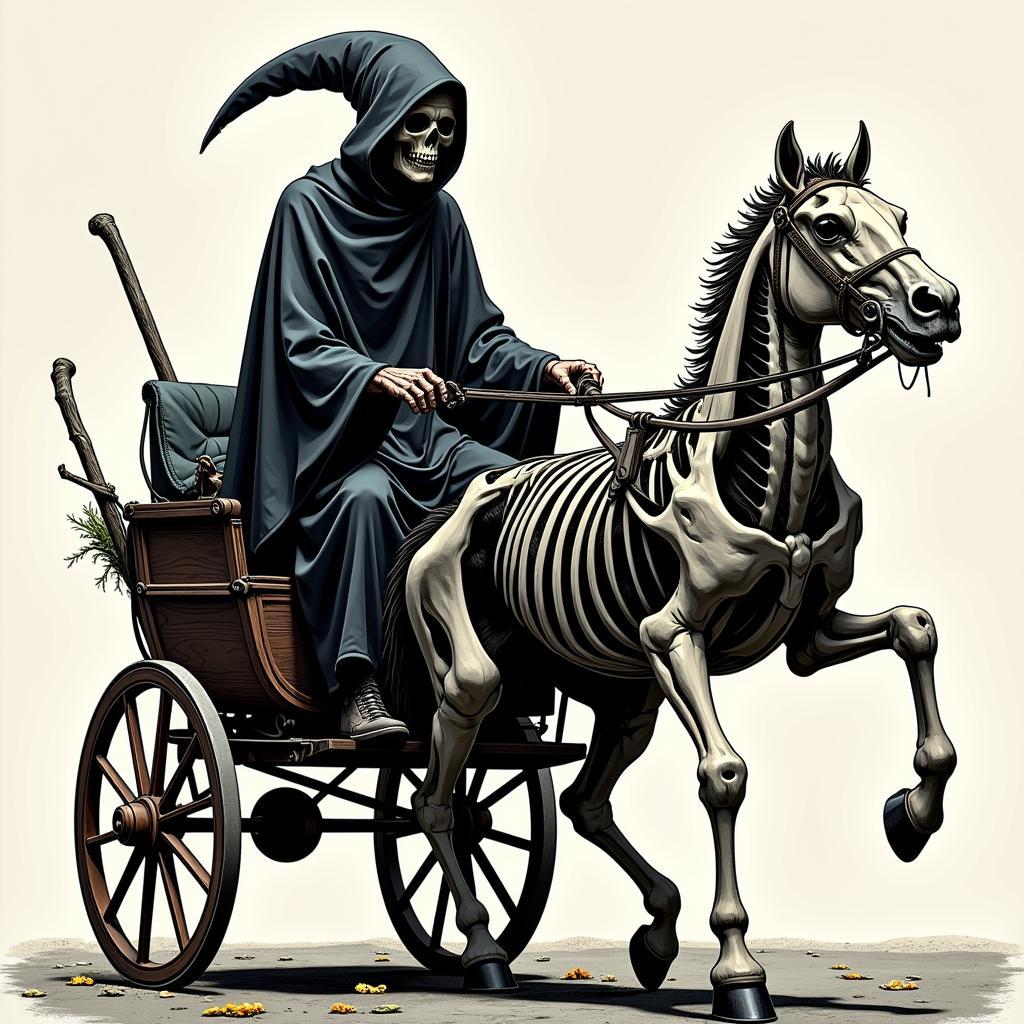The image of a Skeleton Horse And Carriage is deeply ingrained in our collective imagination, often conjuring up feelings of unease and fascination. But where did this haunting symbol originate, and what is its significance beyond spooky Halloween decorations? Let’s delve into the history and folklore surrounding the skeleton horse and carriage to uncover the stories behind this enduring image.
The Origins of a Haunting Image
While often linked to Halloween, the skeleton horse and carriage have roots that extend far beyond this modern holiday. Its origins can be traced back to ancient mythology and folklore, where horses held significant cultural and spiritual weight.
 Ancient Depictions of Skeleton Horse and Carriage
Ancient Depictions of Skeleton Horse and Carriage
In many cultures, horses symbolized the passage to the afterlife. The Celts, for example, believed that horses carried souls to the otherworld, a belief reflected in their burial rituals that often included the sacrifice of horses. This association of horses with death naturally extended to skeletal representations, which served as potent symbols of mortality and the transition between life and death.
The Grim Reaper’s Ride: The Skeleton Horse and Carriage in Folklore
Perhaps the most iconic image associated with the skeleton horse and carriage is its connection to the Grim Reaper, the personification of death in many Western cultures. While the Grim Reaper’s origins are shrouded in mystery, the image of him riding a skeletal horse pulling a carriage laden with souls emerged in medieval Europe, likely influenced by the Black Death, which ravaged the continent in the 14th century.
 The Grim Reaper's Carriage: An Iconic Image of Death
The Grim Reaper's Carriage: An Iconic Image of Death
During this time, death became an inescapable part of life, and the Grim Reaper, with his skeletal steed and carriage, became a chilling reminder of its ever-present reality. The image resonated deeply with people, solidifying the skeleton horse and carriage’s place in popular culture as a symbol of death, fear, and the unknown.
Beyond the Grave: Modern Interpretations and Adaptations
While the skeleton horse and carriage retains its association with death and the macabre, contemporary interpretations have expanded beyond its traditional meanings. In art, literature, and popular culture, the image is often reimagined, taking on new layers of symbolism and meaning.
Some artists and writers use the skeleton horse and carriage to explore themes of mortality, transformation, and the cyclical nature of life and death. Others employ the image to symbolize fear, the passage of time, or the inevitability of change.
 Modern Interpretations of the Skeleton Horse and Carriage
Modern Interpretations of the Skeleton Horse and Carriage
Regardless of the interpretation, the skeleton horse and carriage remains a powerful and evocative image that continues to captivate and intrigue us. Its enduring presence in our collective imagination speaks to our complex relationship with death, mortality, and the mysteries that lie beyond the veil of life.